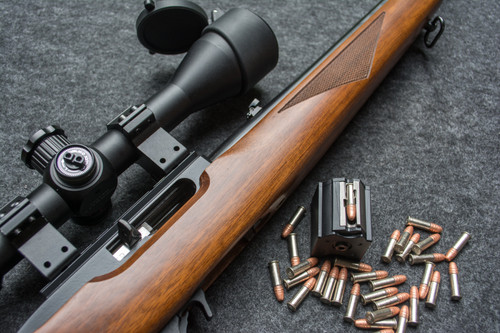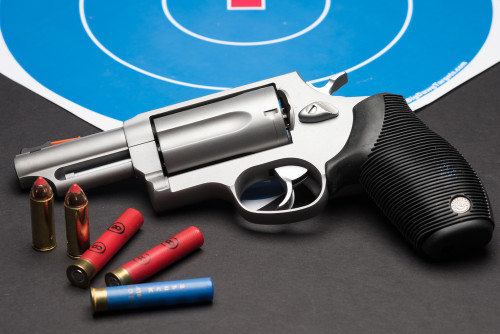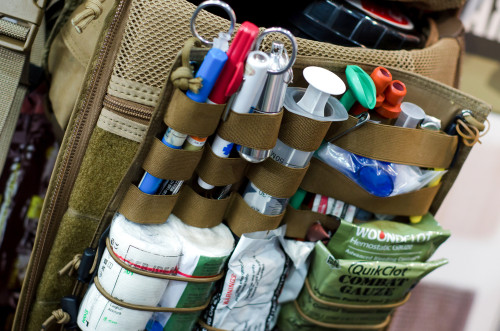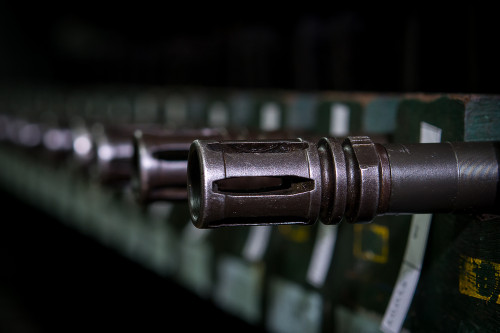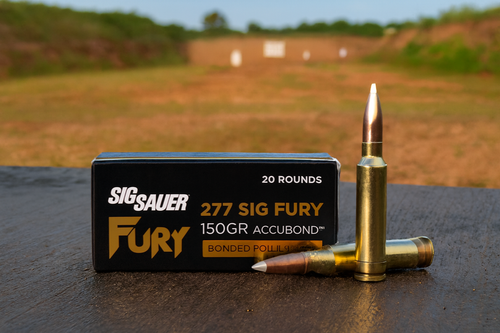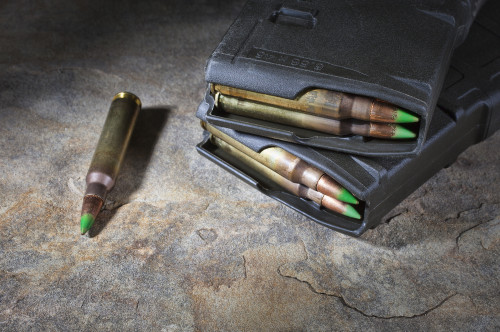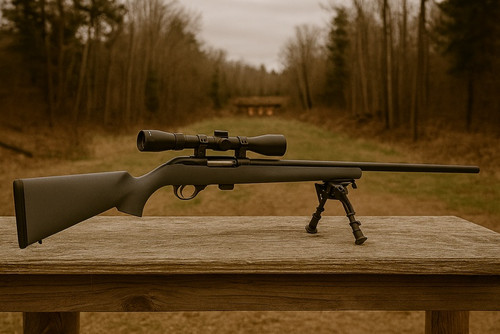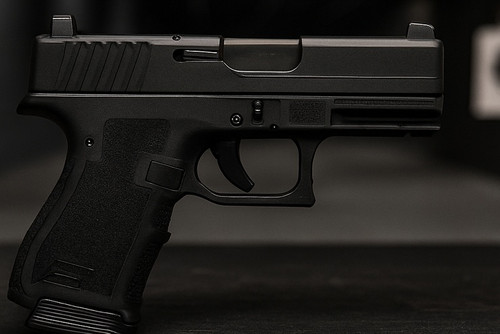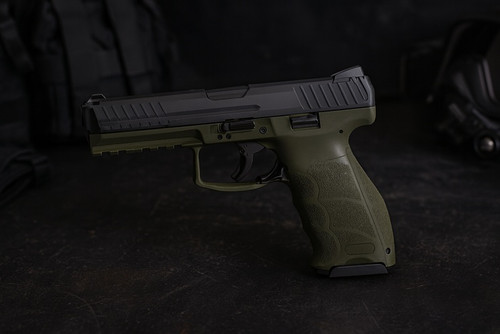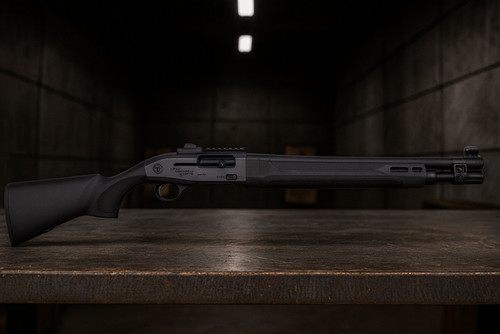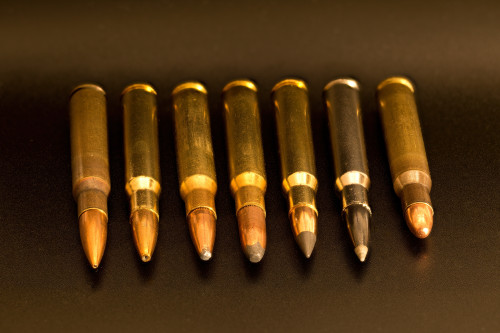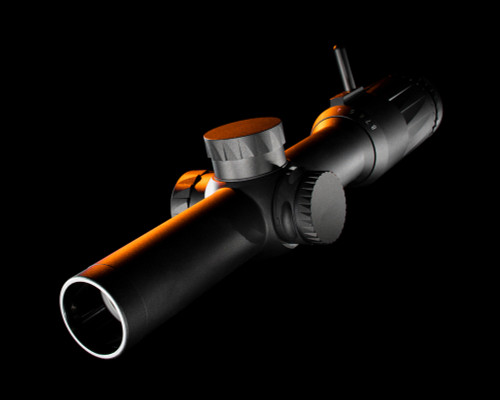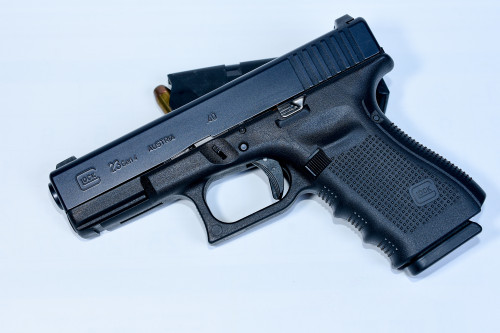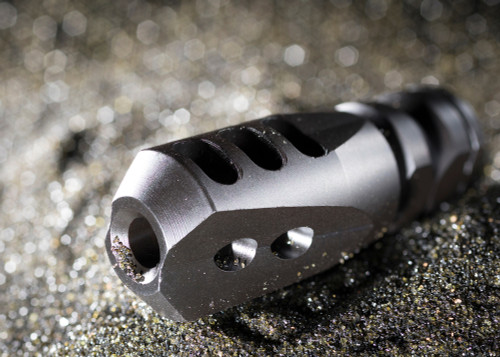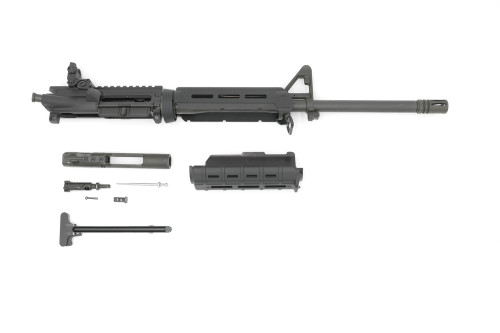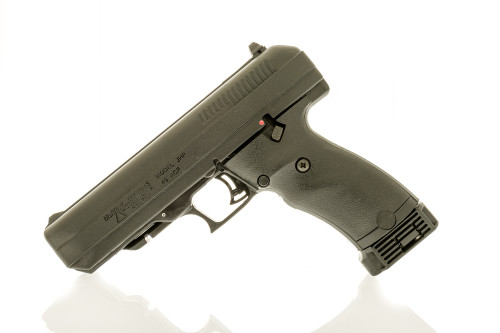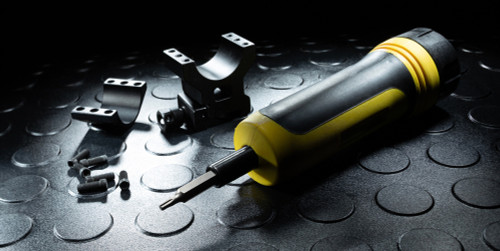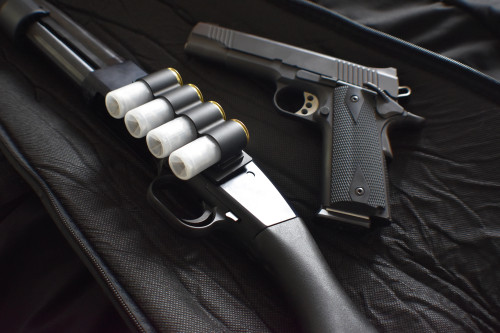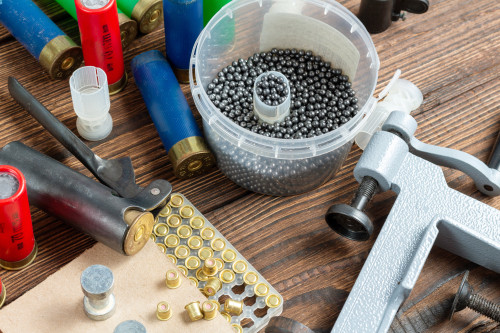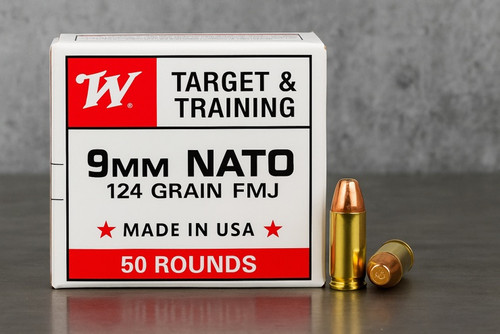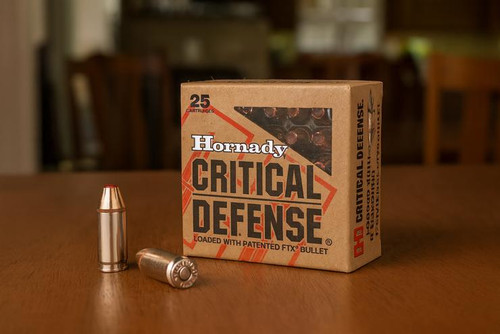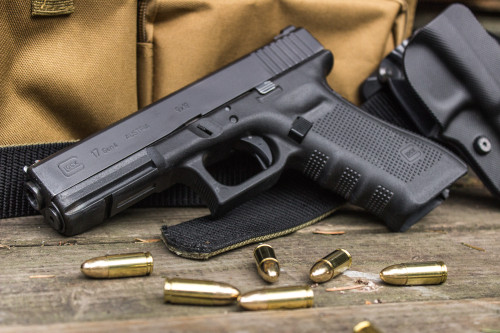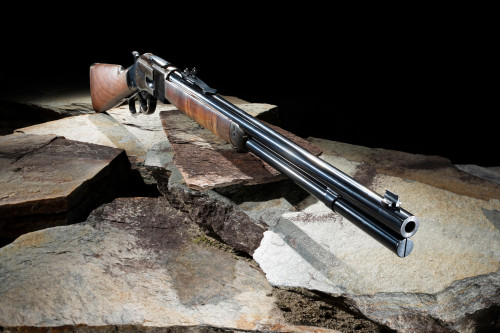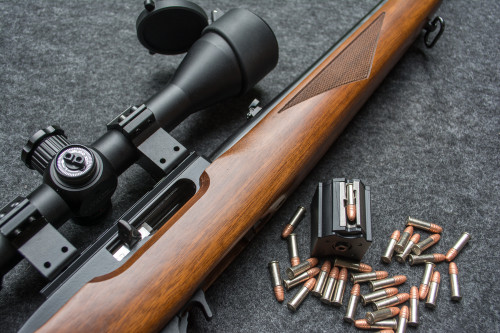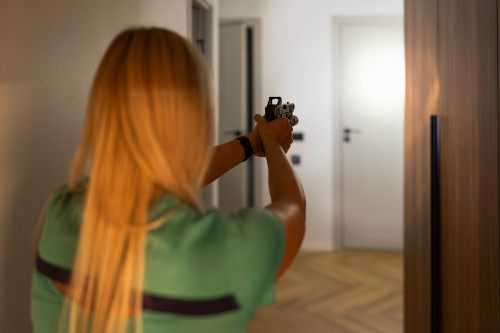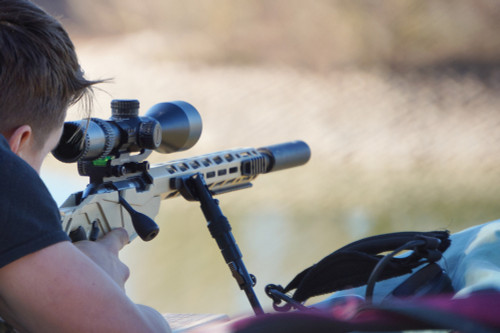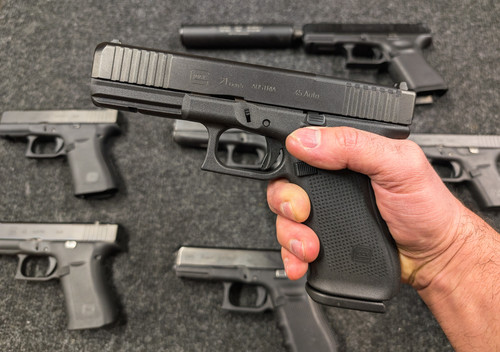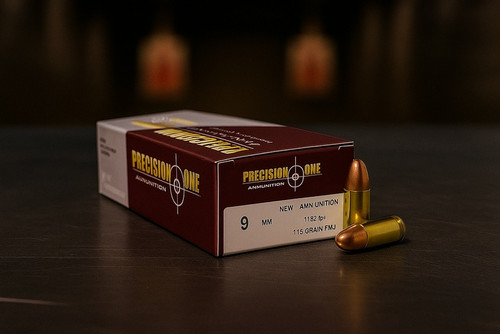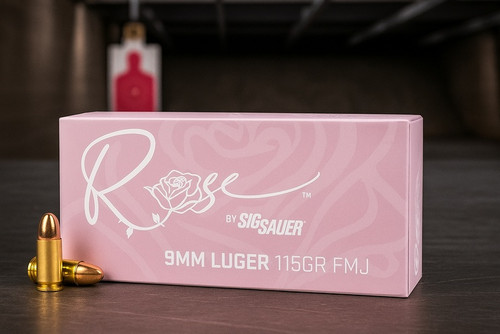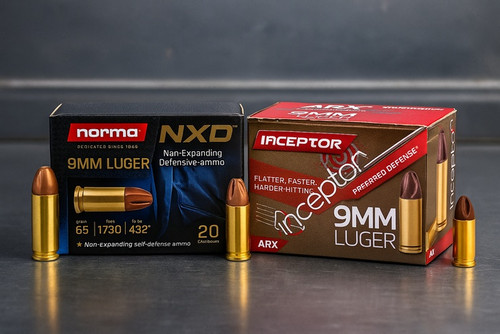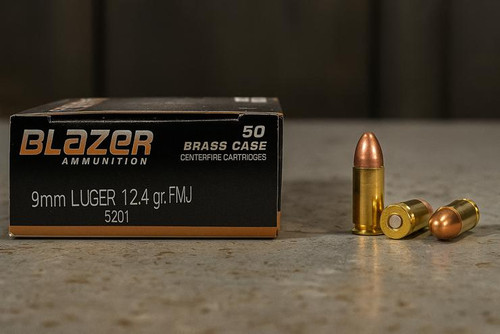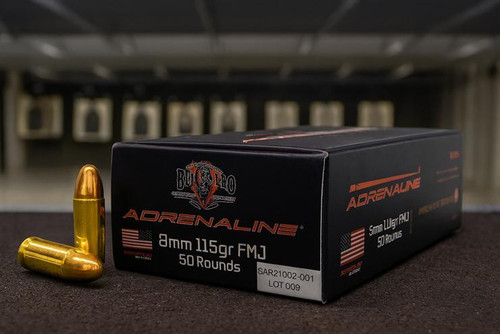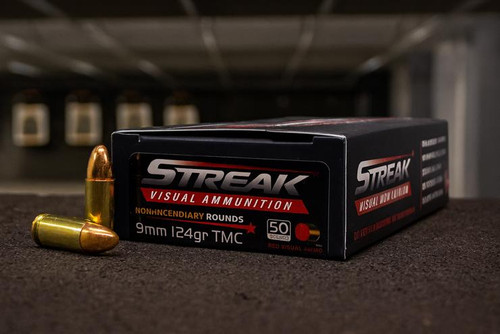Quick Answer
Enclosed-emitter pistol optics house the LED behind sealed front and rear glass, keeping the emitter protected from rain, snow, dust, and debris. While the emitter itself won’t get blocked, heavy mud or opaque gunk on the front window can still obscure the dot—so you still need a reasonably clear front glass. In practice, they keep the emitter protected; as long as the window stays reasonably clear, your dot remains usable in conditions that can disable many open emitters. This guide reviews the best enclosed optics across all price points—from budget-friendly options under $350 to premium duty-grade models for maximum durability.
Key Takeaways
- Enclosed emitter optics block debris, water, and dust from reaching the LED source.
- They excel in harsh conditions where open emitters might fail.
- Prices range from around $300 (budget) to $700 (premium duty-grade).
- Options differ in reticle style, mounting footprint, and battery life.
- Most full-size enclosed optics (e.g., ACRO footprint) need adapter plates; micro options like the Holosun EPS Carry often direct-mount to RMSc-cut slides (no plate).
Last winter, a firearms instructor ran a rain-soaked defensive pistol course with two identical handguns. One sporting an open emitter dot, the other an enclosed model. By lunch, the open emitter was struggling with water droplets blocking the projection path. The enclosed emitter? Still running crystal clear through downpours. "That's when I became a convert," he told students. "When your life depends on seeing that dot, enclosed is the way to go."
Why Enclosed Emitters Matter for Modern Pistols
Red dot sights have completely changed how people shoot handguns. They've moved from competition curiosities to mainstream self-defense tools. But not all red dots are created equal.
The key difference comes down to how the LED emitter (the part that creates the red (or green) dot) is housed. Open emitter designs place the LED behind a single lens with the back exposed. This creates a cup-like shape that can catch water, snow, dirt, or even pocket lint.
Enclosed emitters solve this problem by sealing the LED between two lenses in a protective housing. Nothing gets between the emitter and the lens to block or distort your aiming point. For defensive or duty use, this extra protection can be crucial.
"All red-dot sights work from a very simple principle: They make use of a battery-powered electronic emitter that projects focused-LED light only at a specially coated lens," explains Shooting Illustrated. "Most red-dot sights have an open, L-shaped design... the downside is that they leave the emitter exposed to the elements."
The tradeoff? Enclosed emitter optics tend to be bulkier, heavier, and more expensive than their open-emitter cousins. But for many serious users, that's a small price to pay for the added security.
If your enclosed emitter shows drift, parallax, or alignment issues, follow our troubleshooting and re-zero procedures in How to Sight In a Red Dot before assuming a hardware failure.
How We Tested These Pistol Optics
When evaluating these enclosed emitter optics, we looked at feedback from professional trainers, competition shooters, and everyday carriers who put these sights through real-world use. Each optic was judged on several key factors:
Durability: Can it handle the violent recoil cycles of a pistol slide without losing zero? Does it keep working in rain, dust, and extreme temperatures?
Optical Clarity: How clear is the glass? Is there tinting that affects target visibility? Does the dot remain crisp across brightness settings?
Battery Life: How long does it run on a single battery? Does it have power-saving features like auto-brightness or shake-awake?
Mounting & Footprint: Which slides will it fit directly? What adapter plates are needed? How securely does it mount?
Controls & Usability: Are the buttons easy to use? Can settings be adjusted quickly? Is battery replacement simple?
Value: Does the performance justify the price tag? Are there better options at similar price points?
Our recommendations come from aggregating this expert feedback along with consumer experiences to identify the most worthy options across different price ranges.
Top Enclosed Emitter Pistol Optics (Reviewed & Ranked)
| Optic | Window Size (W × H) | Dimensions (L × W × H) | Weight |
|---|---|---|---|
| Aimpoint ACRO P-2 | 0.63″ × 0.63″ | 1.9″ × 1.3″ × 1.2″ | 2.1 oz |
| Swampfox Kraken | 0.63″ × 0.63″ | 1.85″ × 1.38″ × 1.27″ | 2.5 oz |
| Holosun EPS Carry | 0.58″ × 0.77″ | 1.62″ × 1.07″ × 0.95″ | 1.2 oz |
| Steiner MPS | 0.79″ × 0.63″ | 2.17″ (L) | 2.1 oz |
| Meprolight MPO PRO-F | 0.95″ × 0.7″ | 1.85″ × 1.19″ × 1.26″ | 1.8 oz |
| Sig Sauer Romeo2 | 1.18″ × 1.18″ | 1.84″ × 1.32″ × 1.12″ | 1.6–2.5 oz |
| C&H Precision Duty | 0.63″ × 0.63″ | 1.85″ × 1.38″ × 1.26″ | 2.5 oz |
| Largest Window: Sig Sauer Romeo2 (1.18″ × 1.18″) | Lightest Optic: Holosun EPS Carry (1.2 oz) | |||
Aimpoint ACRO P-2 – Best Overall
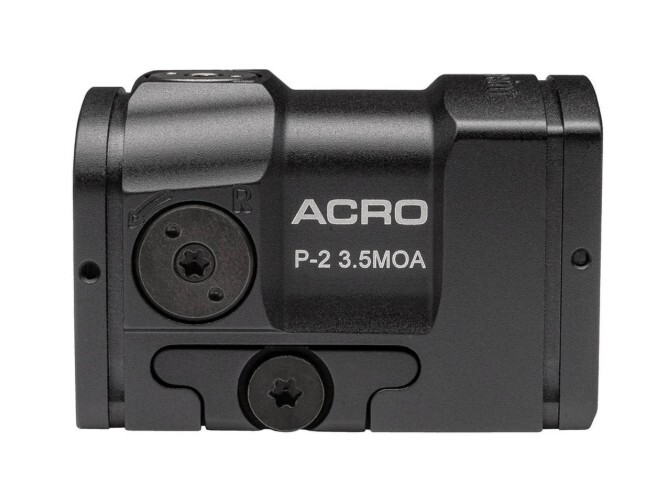
The Aimpoint ACRO P-2 stands as the gold standard in enclosed emitter pistol optics. This second-generation model fixed the battery life issues that plagued the original ACRO and cemented Aimpoint's place at the top of the duty-grade optic mountain.
The glass quality on the ACRO P-2 is exceptional. It's clear with minimal tinting. The 3.5-MOA dot appears crisp and circular at all brightness settings, not the starburst shape you'll see in cheaper optics. It's easy for your eye to pick up quickly in any lighting condition.
Where the ACRO P-2 truly separates itself is in extreme durability. This optic can be submerged 115 feet underwater and function in temperatures from -49°F to 160°F. Dust, sand, mud, snow—none of it matters. The ACRO shrugs it all off and keeps running.
The battery life matches its tank-like construction, offering 50,000 hours (over 5 years) of run time at a mid-level brightness setting. The CR2032 battery is common and easy to find, and it sits in a side-loading tray, so you can swap batteries without removing the optic or risking a loss of zero. This is a small inconvenience for the massive reliability gains.
One minor weak point: the brightness adjustment buttons are small and somewhat difficult to find by feel. You'll either need to practice finding them or look at the optic when making adjustments. This is a small complaint about what is otherwise the most bombproof pistol optic on the market.
Price: $599
Specs
- Reticle: 3.5-MOA red dot
- Brightness Settings: 10 (6 day, 4 night vision)
- Mounting Footprint: ACRO
- Battery: CR2032
- Battery Run Time: 50,000 hours
- Window: 0.63″ wide, 0.63″ high
- Dimensions: 1.9" long, 1.3" wide, 1.2" high
- Weight: 2.1 oz
Features
- Submersible to 115 feet
- Functions in temperatures from -49°F to 160°F
- Night vision compatible
- Battle-proven military-grade construction
- Fully sealed housing resistant to all elements
Pros
- Incredible durability
- Outstanding glass clarity
- Excellent dot quality
- Long battery life
- Simple, bulletproof design
Cons
- Expensive
- Small adjustment buttons
- Must remove optic for battery changes
- Slightly bulky on compact pistols
Swampfox Kraken – Best Budget
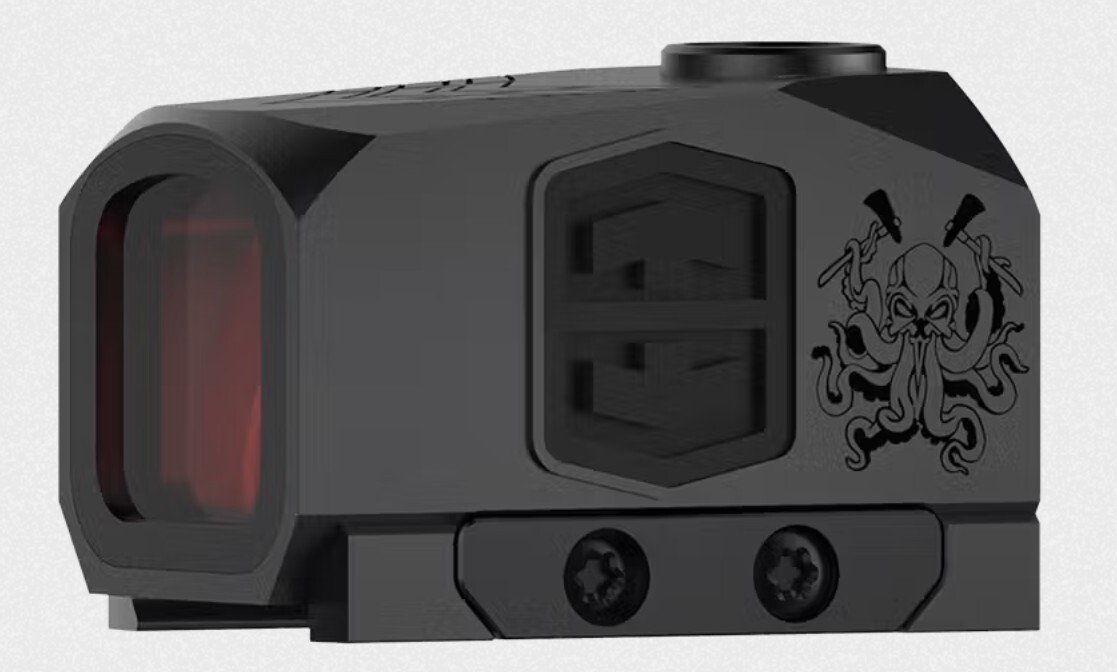
Swampfox has carved out a reputation as the value brand in the optics world, offering feature-rich products at wallet-friendly prices. Their Kraken represents their first foray into enclosed emitter designs, and it offers impressive bang for your buck.
Need a compact view that still works? The Kraken provides a 16mm by 16mm window, respectable for an enclosed emitter. A blue tint shows in the glass, yet it is usually not distracting. The 3-MOA dot stays crisp and round at max brightness, but can show a mild starburst at low settings.
From a durability standpoint, the Kraken has an IPX7 waterproof rating and can handle up to 1,500 Gs of recoil. That is plenty tough for the snappiest pistol slides. The shake-awake feature helps preserve battery life, which is rated at a solid 17,250 hours, not class-leading but more than adequate for most people.
The controls on the Kraken deserve special mention. Two oversized buttons give tactile feedback with each press, and they are recessed to prevent accidental changes. Ten brightness settings offer a wide range, including two that work with night vision devices.
What really sets the Kraken apart in the budget category is the included mounting hardware. It uses a proprietary Kraken base footprint (not native RMR/ACRO), but ships with adapter plates for RMR and MOS plus a screw kit, giving solid out-of-box mounting flexibility for most common slides. In short: proprietary base footprint, plates cover most setups.
Price: $306.99
Specs
- Reticle: 3-MOA red dot or 3-MOA green dot
- Brightness Settings: 10 (8 day, 2 night vision)
- Mounting Footprint: Kraken (proprietary)
- Battery: CR2032
- Battery Run Time: 17,250 hours
- Window: 0.63″ wide, 0.63″ high
- Dimensions: 1.85" long, 1.38" wide, 1.27" high
- Weight: 2.5 oz
Features
- Shake-awake technology
- IPX7 waterproof rating
- 1,500 G recoil rating
- Includes RMR and MOS adapter plates
- Red or green dot options
Pros
- Excellent value for money
- Large, tactile adjustment buttons
- Shake-awake preserves battery
- Includes mounting hardware
- Surprisingly robust construction
Cons
- Noticeable blue tint
- Dot less crisp at lower brightness
- Proprietary footprint
- Heavier than some competitors
- Not as duty-ready as premium options
Holosun EPS Carry – Best for CCW
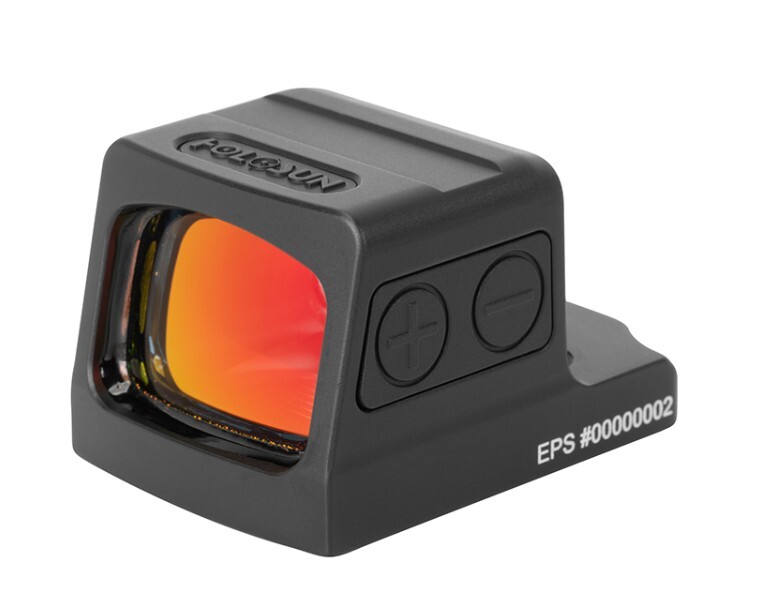
The Holosun EPS Carry represents the next evolution in compact pistol optics. Unlike most enclosed emitters that tend to be bulky, the EPS Carry was specifically designed for concealed carry pistols. Particularly the new generation of micro-compacts that have taken the market by storm.
What makes the EPS Carry special is its mounting footprint. It uses the Shield RMSc pattern, which means it drops directly onto many popular CCW pistols without adapter plates. This creates a cleaner, lower-profile setup that is ideal for concealment. The optic sits low on the slide, and the housing has a shallow rear notch that can serve as a rudimentary backup index, but it’s not a dedicated rear sight.
Want speed without losing clarity? Holosun offers the EPS Carry in many setups. Pick red or green reticles, 2-MOA or 6-MOA dots, or the Multi-Reticle System that combines dot and circle. The 6-MOA dot excels for defensive use, giving fast and confident acquisition without hiding targets at practical distances.
Battery life reaches up to 50,000 hours, helped by a shake-awake feature that powers the optic down when not in use. The side-loading battery tray is a smart touch, since you can replace the battery without removing the optic from the pistol, which means you do not have to re-zero after a battery swap.
The glass clarity is good with only a slight blue tint, and the dot stays bright even in harsh sunlight. With 12 brightness settings, including four for night vision, the EPS Carry has brightness to spare for any lighting condition you might encounter.
Price: $329
Specs
- Reticle Options: 2-MOA dot, 6-MOA dot, or Multi-Reticle (in red or green)
- Brightness Settings: 12 (8 day, 4 night vision)
- Mounting Footprint: RMSc
- Battery: CR1620 (side-loading)
- Battery Run Time: 50,000 hours
- Window: 0.58″ wide, 0.77″ high
- Dimensions: 1.62″ long, 1.07″ wide, 0.95″ high
- Weight: 1.2 oz
Features
- Shake-awake technology
- Side-loading battery tray
- Rear notch backup sight
- Multiple reticle options
- Optional solar backup (on some models)
Pros
- Compact size perfect for CCW
- Direct-mount to many popular micro-compacts
- Long battery life
- Easy battery replacement without losing zero
- Lightweight design
Cons
- Slightly higher price than previous Holosun models
- Smaller battery than some competitors
- Minor blue tint to glass
- Limited solar functionality in low light
- Higher models get expensive quickly
Steiner MPS (Micro Pistol Sight) – Most Durable
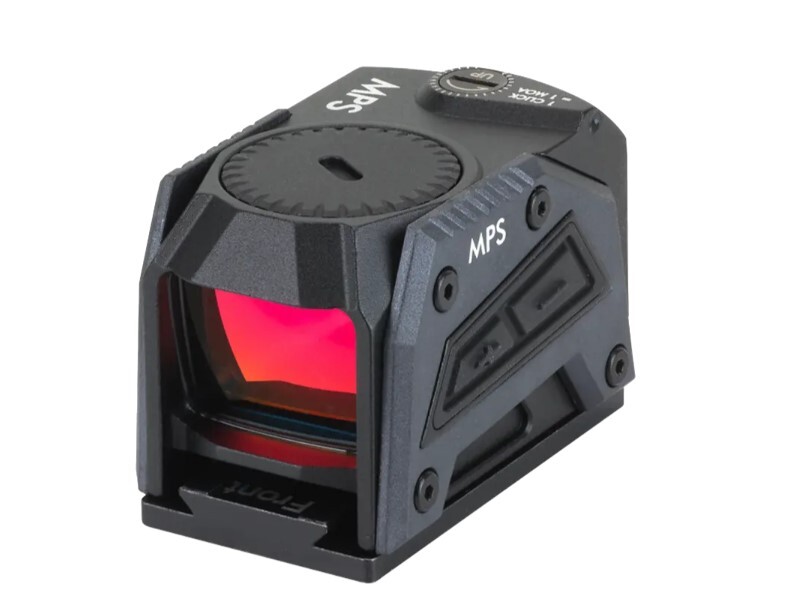
Steiner has long been known for bombproof optics in the military and law enforcement sectors. The MPS (Micro Pistol Sight) brings that same rugged DNA to the pistol optic market with some clever engineering that sets it apart from competitors.
The most striking feature of the MPS is its deeply recessed front lens, protected by an aggressive hood. This design choice prioritizes lens protection in rough handling situations. You could literally rack the slide using the front of this optic against a hard surface and it would shrug it off. The optic is also submersible up to 10 meters, making it truly waterproof, not just water-resistant.
Optically, the MPS is exceptional. The glass is crystal clear with virtually no tinting, and the 3.3-MOA dot is perfectly shaped across all brightness settings. The viewing window is massive at 21mm by 16mm, giving you an expansive field of view that aids in rapid target acquisition and situational awareness.
A unique internal design places the emitter at the top of the optic rather than the bottom. This clever engineering allows the MPS to sit lower on the slide than most enclosed emitters, reducing its profile and making it less likely to snag. The controls are deeply recessed to prevent accidental adjustments but provide good tactile feedback when pressed.
The one area where the MPS falls short is battery life. At 13,000 hours, it lags behind industry leaders like Aimpoint and Holosun. The top-loading battery compartment makes changes easy, but you'll be doing them more frequently than with some competitors.
Price: $499
Specs
- Reticle: 3.3-MOA red dot
- Brightness Settings: 8 (6 day, 2 night vision)
- Mounting Footprint: ACRO
- Battery: CR1632
- Battery Run Time: 13,000 hours
- Window: 0.79″ wide, 0.63″ high
- Dimensions: 2.2″ long
- Weight: 2.1 oz
Features
- Deeply recessed protective lens hood
- Top-loading battery compartment
- Submersible to 10 meters
- Top emitter for lower profile
- Duty-grade construction
Pros
- Exceptional lens protection
- Crystal-clear glass with minimal tint
- Large viewing window
- Low mounting height
- Built like a tank
Cons
- Shorter battery life than competitors
- Slightly longer footprint
- Limited night vision settings
- Premium price point
- Brightness buttons could be larger
Meprolight MPO PRO-F – Best Value for Features
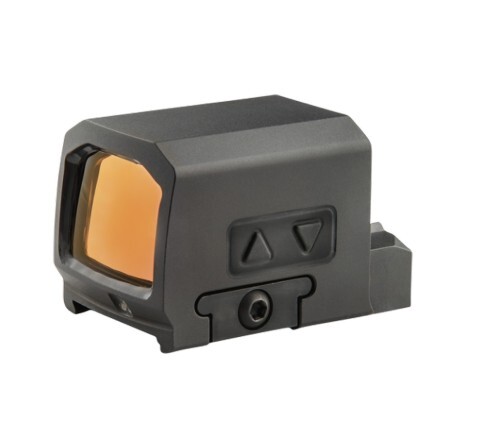
The Meprolight MPO PRO-F represents an impressive package of features at a mid-tier price point. This Israeli-designed optic brings military experience to the civilian market with truly standout characteristics that suit defensive and recreational use.
What immediately jumps out about the MPO PRO-F is its size-to-window ratio. Despite being more compact than many enclosed emitters, it boasts one of the largest viewing windows in its class at 0.95" wide by 0.7" high. This generous window makes target acquisition noticeably faster, especially for those transitioning from iron sights.
The multi-reticle system is another highlight, offering three configurations: a 3-MOA dot alone, a 33-MOA ring alone, or both combined. This flexibility is very useful. The dot provides precision at distance, the ring offers lightning-fast acquisition up close, and the combined reticle gives you the best mix.
Battery management is well-thought-out with automatic and manual brightness adjustment across 12 settings (10 daylight, 2 night vision). The auto-shutdown feature helps squeeze 20,000 hours from the CR1632 battery, and the optic wakes instantly when moved thanks to its shake-awake technology.
The one drawback is its proprietary mounting footprint, though Meprolight does include an RMR adapter in the box. This means you'll likely need to use the included adapter or purchase additional ones for your specific pistol, adding a small layer of complexity to the mounting process.
Price: $339
Specs
- Reticle: Red multi-reticle (3-MOA dot, 33-MOA ring, or both)
- Brightness Settings: 12 (10 day, 2 night vision)
- Mounting Footprint: Proprietary (ships with RMR adapter)
- Battery: CR1632
- Battery Run Time: 20,000 hours
- Window: 0.95″ wide, 0.7″ high
- Dimensions: 1.85″ long, 1.19″ wide, 1.26″ high
- Weight: 1.8 oz
Features
- Auto and manual brightness modes
- Shake-awake technology
- Three reticle options
- Includes RMR adapter
- Auto-shutdown power saving
Pros
- Outstanding window size for compact body
- Versatile multi-reticle system
- Good balance of features and price
- Decent battery life
- Compact enough for concealed carry
Cons
- Proprietary mounting footprint
- Slight blue tint to glass
- Battery life less than premium options
- May require additional adapters
- Limited night vision settings
Sig Sauer Romeo2 – Most Versatile
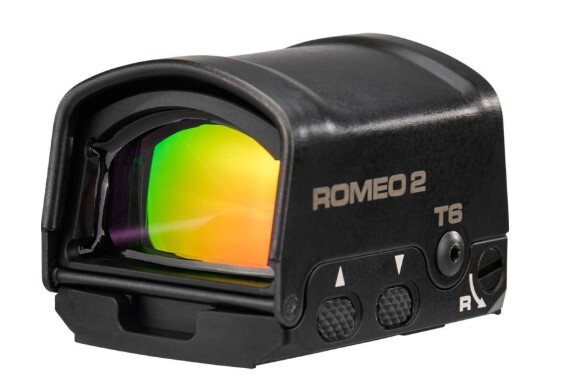
The Sig Sauer Romeo2 stands out as perhaps the most innovative pistol optic on the market thanks to its modular, convertible design. Unlike anything else available, the Romeo2 can transform from an open emitter to an enclosed emitter optic on demand.
This adaptability comes via a metal shroud and polycarbonate lens that can be installed to convert the base open emitter into a fully protected sight. This gives you the best of both worlds. The sleek profile of an open emitter when you want it, and the all-weather protection of an enclosed emitter when conditions demand it.
The optics are top-notch, with incredibly clear glass and a perfect dot in either 3-MOA or 6-MOA versions. Sig's MOTAC (Motion Activated Illumination) system provides shake-awake functionality that extends battery life to around 25,000 hours. Impressive but not class-leading. The fancy spring-loaded battery door is a nice touch that makes battery changes easier.
One concern many have about the modular design is fogging between the lenses when in enclosed configuration. Surprisingly, if you follow Sig's instructions and ensure no moisture is trapped when sealing it up, fogging isn't an issue even in humid environments with temperature changes.
Controls consist of two recessed buttons that manage 12 daylight and 3 night vision settings. They're deliberately difficult to press accidentally, which is good for preventing unwanted adjustments but requires some intentional effort when you do want to change settings.
Price: $699
Specs
- Reticle: 3-MOA red dot, 6-MOA red dot, or multi-reticle
- Brightness Settings: 15 (12 day, 3 night vision)
- Mounting Footprint: DPP / Romeo1Pro footprint.
- Battery: CR2032
- Battery Run Time: 25,000 hours
- Dimensions: 1.84″ long, 1.32″ wide, 1.12″ high
- Weight: 1.6 to 2.5 oz (configuration dependent)
Features
- Convertible open/enclosed design
- MOTAC shake-awake technology
- Spring-loaded battery door
- Metal protective shrouds
- Large viewing window
Pros
- Unmatched versatility
- Outstanding optical clarity
- Excellent dot quality
- Good battery life
- Multiple configuration options
Cons
- Premium price point
- Not a "true" sealed unit in base form
- Proprietary mounting footprint
- Heavier in full enclosed configuration
- Requires proper assembly to prevent fogging
C&H Precision Duty – Best Multi-Reticle Option
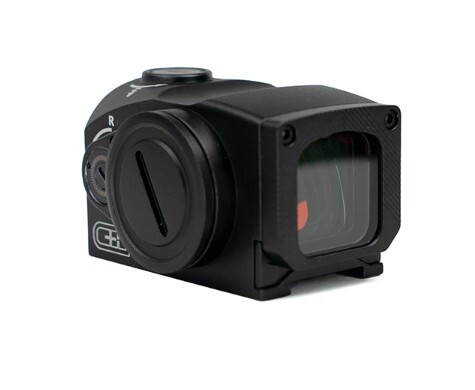
C&H Precision has made a name for itself producing high-quality adapter plates for mounting optics to pistols. The Duty represents their entry into manufacturing complete optics, bringing their extensive mounting expertise to bear on a purpose-built enclosed emitter sight.
The Duty is unabashedly robust. This is one of the largest, beefiest pistol optics available. That size comes with purpose: it's rated specifically for +P and +P+ ammunition, making it suited for serious defensive and duty applications where hotter loads are the norm.
Of the three reticle options available, the multi-reticle version stands as the clear winner. This configuration allows you to select just the 3-MOA dot for precision work, just the 33-MOA ring for lightning-fast close-quarters acquisition, or both combined for maximum versatility. The ability to switch between these options based on your shooting context is genuinely useful.
Battery life is excellent at 50,000 hours, matching industry leaders like Aimpoint. The side-loading battery door means you can swap the CR2032 without removing the optic from your pistol. This is a significant convenience that helps maintain your zero. Controls are straightforward and intuitive, though not particularly large.
The optic uses the ACRO footprint, which has become something of a standard in the enclosed emitter world. This compatibility simplifies mounting on most optics-ready pistols, as ACRO plates are widely available from both manufacturers and aftermarket suppliers.
Price: $324–$349
Specs
- Reticles: 3-MOA red dot, 3-MOA green dot, or red multi-reticle
- Brightness Settings: 10 (8 day, 2 night vision)
- Mounting Footprint: ACRO
- Battery: CR2032 (side-loading)
- Battery Run Time: 50,000 hours
- Window: 0.63″ wide, 0.63″ high
- Dimensions: 1.85″ long, 1.38″ wide, 1.26″ high
- Weight: 2.5 oz
Features
- +P/+P+ rated construction
- Side-loading battery
- Multiple reticle options
- Standard ACRO footprint
- Duty-focused design
Pros
- Excellent multi-reticle functionality
- Outstanding battery life
- Side battery access without removing optic
- Strong value proposition
- Compatible with common mounting solutions
Cons
- Bulky profile on smaller pistols
- Heavier than most competitors
- Limited night vision settings
- Basic controls
- Window size modest for its overall dimensions
Pros & Cons
NRA Women explains the fundamental difference: "In a closed-emitter optic, the emitter that projects the light is enclosed between two pieces of glass... in an open-emitter optic, the emitter sits behind the glass and is open in the back." This distinction drives the main advantages and disadvantages.
Pros:
- All-Weather Performance: Rain, snow, mud, and dust stay out of the emitter path.
- Debris Protection: No pocket lint or dust can block your dot when drawing from concealment.
- Durability: The sealed housing offers better protection from impacts and rough handling.
- Dot Consistency: Environmental factors won't distort or block your aiming point.
- Easier First-Time Acquisition: The housing helps align your eye with the dot.
Cons:
- Size and Weight: Enclosed emitters are bulkier and heavier than open designs.
- Cost: Expect to pay 30-50% more than comparable open emitter optics.
- Mounting Challenges: Most pistols don't have direct-cut options for enclosed emitters, requiring adapter plates.
- Limited Window Size: Many enclosed emitters have smaller viewing windows due to the housing design.
- Battery Access: Some models require removing the optic to change batteries, forcing you to re-zero.
How to Choose the Right Optic
Selecting the right enclosed emitter optic comes down to how you plan to use it and what your priorities are:
For Concealed Carry:
Size matters tremendously. The Holosun EPS Carry stands out for its compact dimensions and direct mounting to popular CCW pistols. The Meprolight MPO PRO-F also makes an excellent choice with its balance of compact size and large window.
For Duty/Professional Use:
Absolute ruggedness becomes the priority. The Aimpoint ACRO P-2 and Steiner MPS lead the pack here, with mil-spec durability and proven track records in harsh conditions. The extra bulk is a worthwhile tradeoff for the assurance they'll work when needed most.
For Competition:
Window size and dot clarity take precedence. The Sig Romeo2 offers the largest window and excellent optical clarity, plus the ability to run open for indoor matches and enclosed for outdoor events.
For Budget-Conscious Buyers:
The Swampfox Kraken delivers tremendous value, offering the core benefits of an enclosed emitter at a price point that won't break the bank. The C&H Precision Duty also offers strong value, especially in its multi-reticle configuration.
Battery Life Considerations:
If you hate changing batteries, prioritize optics with 50,000+ hour ratings like the ACRO P-2, EPS Carry, or C&H Precision Duty. Also look for side-loading battery doors that don't require removing the optic.
Mounting Footprints:
Check what your pistol is cut for. The EPS Carry uses the RMSc footprint common on compact pistols. The ACRO footprint (used by Aimpoint, Steiner, and C&H) has become something of a standard for larger pistols. Proprietary footprints like those on the Meprolight and Sig require specific adapter plates.
Final Thoughts
Enclosed emitter pistol optics represent the next evolution in handgun sighting systems. They solve the key vulnerability of open emitters: environmental exposure, without sacrificing performance.
For everyday carry, the Holosun EPS Carry offers the best balance of size, features, and trust. Those needing ultimate ruggedness should look to the Aimpoint ACRO P-2 or Steiner MPS. Budget-conscious buyers will find the Swampfox Kraken delivers tremendous value.
The most exciting aspect of this market segment is how quickly it's growing. Just a few years ago, enclosed emitter options were limited and prohibitively expensive. Today, we have excellent choices across all price points, with more innovations surely on the way.
If you're serious about using a red dot on a defensive or duty pistol, an enclosed emitter optic offers peace of mind that your sighting system will work when you need it most, regardless of rain, snow, mud, or dust. That alone makes them worth a close look for any critical-use handgun.
Not all enclosed-emitter optics are built equal — see our hands-on breakdown of the best pistol red dots to compare battery life, glass, and reticle options: Top 10 Pistol Red Dot Sights — In-Depth Reviews.
Frequently Asked Questions (FAQs)
Are enclosed pistol optics worth it?
Yes, if you carry in adverse conditions, need maximum durability, or simply want the peace of mind that nothing will block your dot. For range-only guns or competition use in controlled environments, an open emitter may suffice.
What distance should I zero a red dot pistol?
Most experts recommend 15-25 yards. This provides a practical zero that works well for defensive distances without requiring significant holdovers at longer ranges. Competition shooters may prefer distances specific to their discipline.
Do enclosed optics fit standard handgun slides?
Most require adapter plates. Few pistols come with direct cuts for enclosed emitter footprints. The exception is the Holosun EPS Carry, which fits the RMSc footprint found on many compact pistols.
Which is better for CCW: open or enclosed emitter?
Open emitters are smaller and lighter, making them easier to conceal. Enclosed emitters offer better protection from pocket lint and debris, plus all-weather performance. The EPS Carry and MPO PRO-F bridge this gap with compact enclosed designs.
How long do batteries last in enclosed emitter optics?
It varies widely, from around 13,000 hours (Steiner MPS) to 50,000 hours (Aimpoint ACRO P-2, Holosun EPS Carry). Most feature auto-brightness or shake-awake technology to extend battery life.
Can enclosed emitters fog up between the lenses?
True sealed units like the ACRO P-2 and Steiner MPS won't fog internally. Modular systems like the Sig Romeo2 can fog if moisture is trapped during assembly, but proper installation prevents this issue.
About the Author
This article was written by the Pro Armory writing team based on current research, including studies from reputable sources like the Journal of Military Science, Firearms News, and the National Shooting Sports Foundation. We also referenced trusted information from official defense publications and respected firearm authorities such as the ATF, NRA, and manufacturer manuals.
Disclaimer: The information provided in this article is for educational purposes only. We do not claim to have personally tested these products. All recommendations are based on manufacturer specifications, expert reviews, and user feedback.




 Pro Armory Editorial Team
Pro Armory Editorial Team




